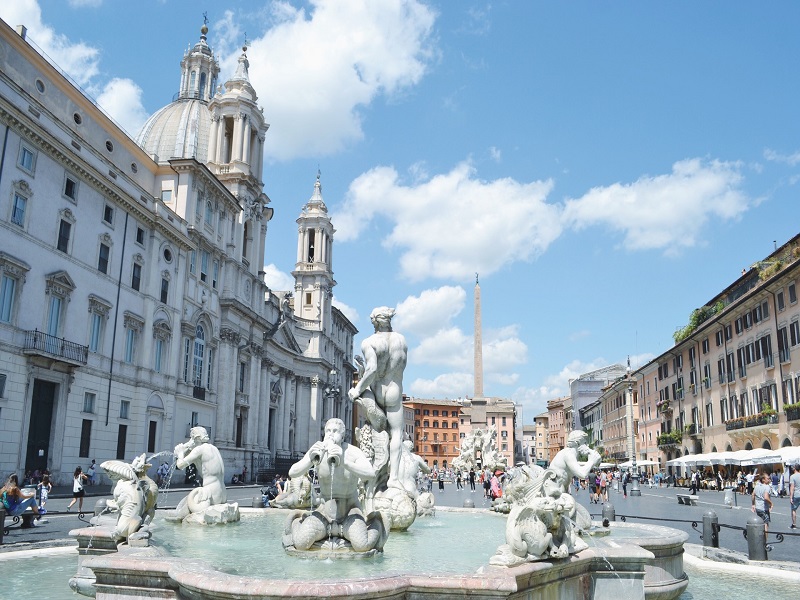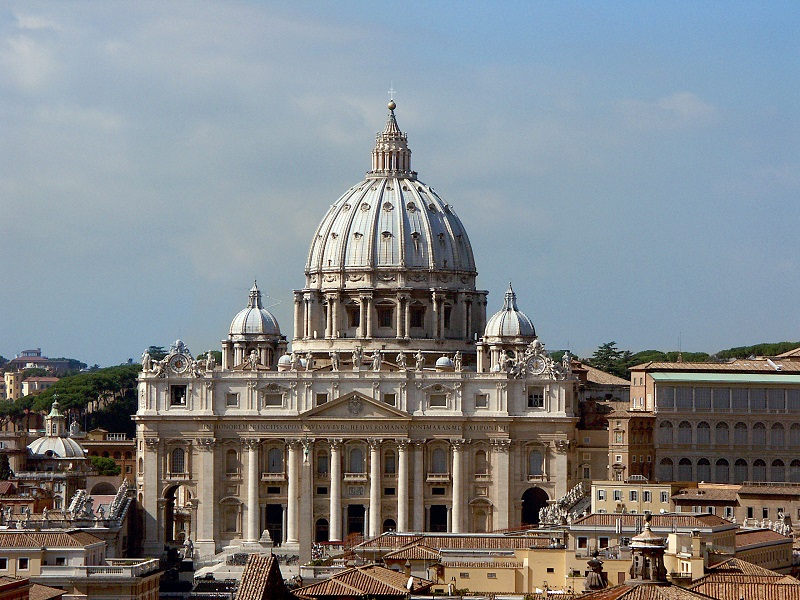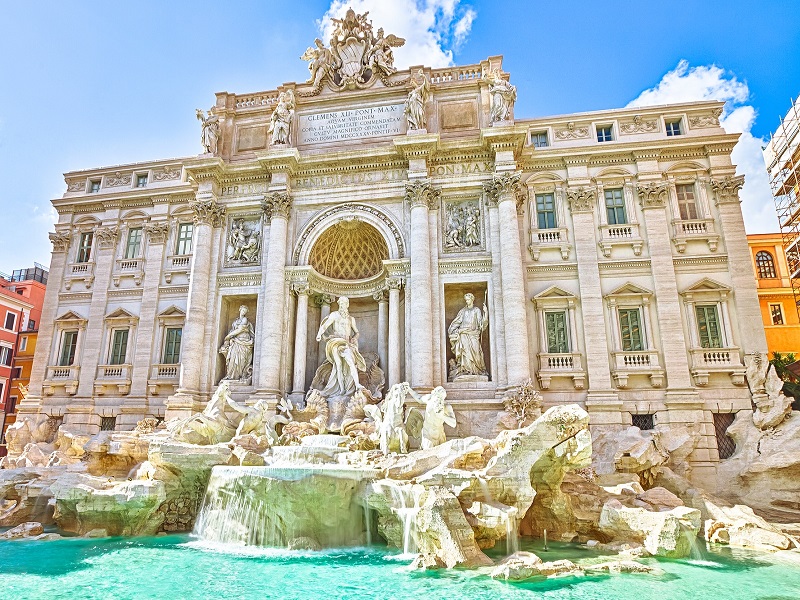Coliseum, also known as the Flavian Amphitheatre, is an oval amphitheater in the center of the city of Rome, Italy. Colosseum is the most recognizable and iconic attractions in Rome, and you should see this structure if you see no other site in Rome. Coliseum was commissioned in AD 72 by Emperor Vespasian in the heart of Ancient Rome. It was completed by his son, Titus, in 80, with later improvements by Domitian.
Rome had a strict class system and so there were 5 rows of audience seating according to the social status in Colosseum. At capacity, the arena could hold 50,000 to 80,000 spectators on the marble benches. This brilliant building had 80 entrances.
Moreover, Roman Colosseum as part of the history of an empire is used for the pleasure of the residents of Rome organized fights between gladiators or against wild animals and fabulous shows called “naumachie” that demonstrate real naval fights in the Sand full of water.
Colosseum was also used for bull fights, gladiator fights, chariot races, official events and various public forms of entertainment. In 404, Colosseum saw its last gladiator fight when the Christian Orthodox Emperor Theodosius banned all forms of paganism and customs. The building ceased to be used for entertainment in the early medieval era. It was later reused for such purposes as housing, workshops, quarters for a religious order, a fortress, a quarry, and a Christian shrine.
Although two-thirds of the colosseum has been destroyed over time – mostly the result of vandalism, earthquakes and fires – it is today a popular tourist site, attracting thousands of people every year!

The word Pantheon is a Greek adjective meaning “honor all Gods”. In fact, the pantheon was first built as a temple to all gods. The Pantheon in Rome was built on the orders of Hadrian between 118AD and 125AD.
Pantheon is one of the attractions in Rome , managed by Italy’s Ministry of Cultural Heritage and Activities and Tourism through the Polo Museale del Lazio. Its dome was the largest in the world for 1300 years and until today it remains the largest unsupported dome in the world. The great architectural achievement was due to the massive weight of the large dome. Roman engineers lightened the dome as much as possible. The materials used in the upper part of the dome were lighter with internal spaces within the dome walls.
So, the building is in very good condition. Thanks to the great renovations made by the Byzantine Emperor Phocas in 608AD when it was converted into a church. In the year 609, Pantheon was the first pagan temple to be transformed into a church and therefore it was saved from being destroyed during the middle Ages. However, the exact composition of the material is still unrevealed and appears to be structurally similar to modern day concrete.
In addition, the exact age of the pantheon remains unknown. Most historians claim that Emperor Augustus right hand, Agrippa, built the first Pantheon in 27 BC. It was burnt in the great fire of 80 AD, rebuilt by Emperor Domitian, but was struck by lightning and burned again in 110 AD.

Piazza Navona is a square in Rome, Italy. It is built on the site of the Stadium of Domitian, built in the 1st century AD, and follows the form of the open space of the stadium. The original name was Circus Agonalis or Circus Agonalis.
The first name of the stadium was ‘Circus Agonalis’ (competition arena). Over time, the name changed to ‘in agone’ to ‘navone’ and eventually to ‘navona
Piazza displays the genius of Bernini and Borromini and is considered as one of the finest Baroque Masterpiece in papal Rome. The main attractions in the square are the three fountains, the most famous being Fontana dei Quattro Fium. The others are The Fountain of the moor or the fontana del Moro and The Fountain of Neptune or Fontana del Nettuno.

St Peter’s Basilica as perhaps the holiest and most important church in Christendom is the heart of the Catholic Church and is located within Vatican City on Vatican Hill and.
A new structure was created here under Bramante in 1506, and was continued by Rafael who took over the task. Rafael was followed by Baldassarre Peruzzi and later Michelangelo. Maderno was responsible for the stunning façade and finally the Basilica was consecrated in 1626. Bernini worked on the church for 20 years and was responsible for much of the beautiful interior furnishing in the 1600s.
Building the basilica was a feat of epic proportions that took 219 years; 31 popes, and 10 architects completed this project. The basilica’s façade is 114 meters wide and 47 meters high with a triple arched portico leading into the atrium which has a central fountain.

Although this is not the most beautiful of Rome’s squares it is the most central with several major routes converging here including Via Corso and Via dei Fori Imperiali.
Piazza Venezia is a square in Rome that took its name from the nearby palace, the Palazzo Venezia.At the monument you find the eternal flame and the Tomb of the unknown soldier. The flame is always lit and is protected by guardians.
From the top of the monument you get a wonderful view over the central parts of Rome and also over The Roman Forum and the Palatine Hill.
Capitalizing on this modern and ancient symbolism-and the useful open space-Piazza Venezia was the location of public speeches given by the Italian dictator Mussolini to crowds of his supporters in the 1920s-1940s.

The Sistine Chapel – Originally known as the Cappella Magna- is part of the Vatican Museums and is named after Pope Sixtus IV (pope from 1471 to 1484). It’s one of the incredible attractions in rome .
It is also a chapel in the Apostolic Palace, the official residence of the Pope, in Vatican City. The chapel was inaugurated in 1483 as our lady of the assumption. Julius II della Rovere (pope from 1503-1513) ordered the refinement and redecoration of the chapel decoration and employed Michelangelo for the job. In 1512, the work was complete and the space was inaugurated as the Sistine Chapel.
Each surface of the chapel is covered with exquisite art; the last Judgment is further painted on the wall opposite the entrance. the story of Christ is featured on the North Wall and the stories of Moses on the South Wall. However, the main painting which visitors come to see is the ceiling fresco by Michelangelo.

The Trevi Fountain is a fountain in the Trevi district in Rome, Italy, designed by Italian architect Nicola Salvi and completed by Giuseppe Pannini. Standing 26.3 meters high and 49.15 meters wide, it is the largest Baroque fountain in the city and one of the most famous and attractive fountains and attractions in rome and in the world.
In 1629 Pope Urban VIII, finding the earlier fountain insufficiently dramatic, asked Gian Lorenzo Bernini to sketch possible renovations, but the project was abandoned when the pope died. Though Bernini’s project was never constructed, there are many Bernini touches in the fountain as it exists today.

Don’t miss these attractions in Rome.